Christian History & Biography Magazine Upgrade (Issues 9, 52–99)
Digital Logos Edition
Overview
Explore the rich heritage of your faith with Christian History & Biography! Since 1982, this quarterly magazine has been dedicated to the events and personalities that have laid the foundations of modern Christianity, covering subjects ranging from Martin Luther to Dietrich Bonhoeffer, from the Crusades to modern Christian-Muslim relations.
Logos is pleased to offer this upgrade edition, featuring Issues 52–99. Each issue includes articles by leading historians, timelines, excerpts from historical writings, biographical vignettes, and page after page of commentary from top scholars. Christian History & Biography is more than just a magazine—it’s an enduring treasure you’ll go back to time after time. Place your order today to experience how 2,000 years of church history comes alive in your digital library!
In these volumes, you will meet such colorful personalities as Augustine, John Chrysostom, Charles Spurgeon, and C.S. Lewis, and learn how the earliest Christians read the Bible, wrestled with theological questions like Christ’s divinity, lived out their faith, and evangelized their world. You will encounter stories of perseverance that overcomes whips and shackles, movements that have cost thousands of lives, and movements that have saved millions. Read articles that invoke the imagination, invigorate the senses, and inspire your mind. Explore the interactions between church and state, between faith and money, between the Arians and the Augustinians, and faith and reason. Christian History & Biography brings you face to face with the people, events, and issues that have shaped our faith. Place your Pre-Pub order today to take advantage of the lowest price!
Reviews
1 rating
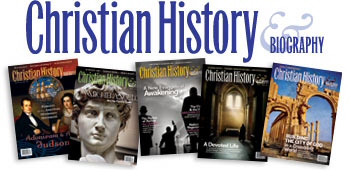
Key Features
- Timelines
- Excerpts and commentary on historical writings
- Recommended resources for each issue
- A “Did You Know?” column containing interesting facts and trivia
- All Scripture references are linked to the Bibles in your digital library
- The powerful search tools in your digital library help you find your way, pinpointing exactly what you need for your research projects.
- Link Christian History & Biography to the rest of the reference works in your digital library, and explore what multiple reference works say about a single subject—all at once!
Product Details
- Title: Christian History & Biography
- Issue: 9, 52–99
- Please note that Christian History & Biography does not include page numbers.
Individual Titles
- Issue 9: Heritage of Freedom: Dissenters, Reformers, & Pioneers
- Issue 52: Hudson Taylor & Missions to China
- Issue 53: William Wilberforce: Fighting the Slave Trade
- Issue 54: Eastern Orthodoxy
- Issue 55: The Monkey Trial & the Rise of Fundamentalism
- Issue 56: David Livingstone: Missionary-explorer in Africa
- Issue 57: Converting the Empire: Early Church Evangelism
- Issue 58: The Rise of Pentecostalism
- Issue 59: Life & Times of Jesus of Nazareth
- Issue 60: How the Irish Were Saved
- Issue 61: A History of the Second Coming
- Issue 62: Bound for Canaan: Africans in America
- Issue 63: How the Vikings Took up the Faith
- Issue 64: Anthony & the Desert Fathers: Extreme Faith
- Issue 65: Ten Influential Christians of the 20th Century
- Issue 66: How the West was Really Won
- Issue 67: St. Augustine: Sinner, Bishop, Saint
- Issue 68: Jan Hus: Incendiary Preacher of Prague
- Issue 69: The Wesleys: Founders of Methodism
- Issue 70: Dante's Guide to Heaven and Hell
- Issue 71: The French Huguenots and the Wars of Religion
- Issue 72: How We Got Our History
- Issue 73: Thomas Aquinas: Greatest Medieval Theologian
- Issue 74: Christians & Muslims
- Issue 75: G.K. Chesterton: Prolific Writer & Apologist
- Issue 76: The Christian Face of the Scientific Revolution
- Issue 77: Jonathon Edwards: Puritan Pastor & Theologian
- Issue 78: J.R.R. Tolkien & Lord of the Rings
- Issue 79: African Apostles: Black Evangelists in Africa
- Issue 80: The First Bible Teachers
- Issue 81: John Newton: Author of “Amazing Grace”
- Issue 82: Phoebe Palmer: Mother of the Holiness Movement
- Issue 83: Mary in the Imagination of the Church
- Issue 84: Pilgrims & Exiles: Amish, Mennonites, & Brethren
- Issue 85: The Council of Nicaea: Debating Jesus’ Divinity
- Issue 86: George MacDonald: Writer Who Inspired C.S. Lewis
- Issue 87: Christianity in India: A Faith of Many Colors
- Issue 88: C. S. Lewis: Pointing People to Realitys
- Issue 89: Richard Baxter & the English Puritans
- Issue 90: Adoniram & Ann Judson: American Mission Pioneers
- Issue 91: Michelangelo: Art for Faith’s Sake
- Issue 92: America’s 20th Century Evangelical Awakening
- Issue 93: St. Benedict & Western Monasticisms
- Issue 94: Building the City of God in a Crumbling World
- Issue 95: The Gospel According to J.S. Bach
- Issue 96: The Gnostic Hunger for Secret Knowledge
- Issue 97: The Holy Land
- Issue 98: Christianity in China
- Issue 99: Faith & the American Presidency
This title is included in the following collections
You can save when you purchase this product as part of a collection.
Christian History Magazine, Is...
$294.08$249.992025 SDA Gold
$849.99$679.99Biblioteca Diamante 2025
$1,499.99$1,049.992025 Charismatic Platinum
$1,499.99$1,199.99
- $1,499.99$1,199.99
- $1,499.99$1,199.99
- $1,999.99$1,399.99
- $1,499.99
- $15,583.80$1,949.99
- $2,999.99$2,249.99
- $2,999.99$2,249.99
- $2,999.99$2,249.99
- $2,999.99$2,249.99
- $2,999.99$2,249.99
- $2,999.99$2,249.99
- $2,999.99$2,249.99
- $2,999.99$2,249.99
- $2,999.99$2,249.99
- $3,149.99$2,362.49
- $3,499.99$2,449.99
- $3,399.99$2,549.99
- $2,699.99
- $3,899.99$2,924.99
- $3,899.99$2,924.99
- $2,999.99
- $2,999.99
- $2,999.99
- $2,999.99
- $2,999.99
- $4,149.99$3,112.49
- $4,064.99$3,389.99
- $4,739.99$3,554.99
- $4,749.99$3,562.49
- $4,749.99$3,562.49
- $4,749.99$3,562.49
- $4,749.99$3,562.49
- $4,749.99$3,562.49
- $4,749.99$3,562.49
- $4,749.99$3,562.49
- $4,749.99$3,562.49
- $4,749.99$3,562.49
- $4,899.99$3,674.99
- $3,914.99
- $17,960.82$4,499.99
- $5,999.99$4,499.99
- $5,999.99$4,499.99
- $4,749.99
- $4,749.99
- $4,749.99
- $4,749.99
- $4,749.99
- $4,749.99
- $6,399.99$4,799.99
- $10,999.99$8,249.99
- $11,399.99
- $11,399.99
- $11,399.99
- $23,999.99$17,999.99
- $21,749.99
- $24,999.99
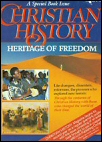
Issue 9: Heritage of Freedom: Dissenters, Reformers, & Pioneers
- Reformers before the Reformation
- The Puritans in Britain and America
- The Moravians
- The Plymouth Brethren
- Christians against the Nazis
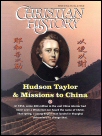
Issue 52: Hudson Taylor & Missions to China
Earnest prayers and saintly courage define the China Inland Mission founded by Hudson Taylor. Clothed in Chinese garb and armed with Mandarin Bibles, this Spirit-led group injected the gospel into the heart of China's mainland, guiding thousands to the Savior and bringing hope to many who were hopeless. Embark on the journey of Hudson Taylor in this exciting and informative issue of Christian History & Biography that will engage your heart and mind with both the beauty and necessity of gospel mission.
- History of missions in China
- Women missionaries
- Breaking free from missionary control
- The Boxer Rebellion
- The influence of the West
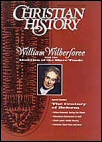
Issue 53: William Wilberforce: Fighting the Slave Trade
A rich man, William Wilberforce found himself in a privileged position to help the underprivileged. A political man, he served in Parliament for forty-five years and championed the cause against slavery. A passionate man, his crooked spine and near-blindness could not quench his zeal for the freedom of all people. A persistent man, his abolition proposal finally passed when presented for the twelfth time. This issue of Christian History & Biography is dedicated to Wilberforce and to the many other brave souls who instigated social reform in 19th century England.
- An introduction to the nineteenth century
- Lord Shaftesbury and William Gladstone
- Child labor
- Prison reform
- Christian ministry in the inner city
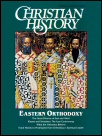
Issue 54: Eastern Orthodoxy
Orthodoxy rarely gets positive press in the West—and it's not hard to see why. Themes of victory and theosis (divinization) take the place of Western theological strongholds like justification. Beliefs crystallize into images rather than ideas, into stories rather than statements. The incomprehensibility of God causes Easterners to celebrate while Westerners grow anxious.
This issue of Christian History & Biography includes both Orthodox and Protestant authors who lend perspective on the Schism, the key similarities and differences between Rome and Constantinople, and the many ways in which the West can learn from the East.
- Four key differences between the Orthodox and Protestants
- The first seven ecumenical councils
- Eastern Orthodox worship
- An interview with Bartholomew I
- Attempts at reunion
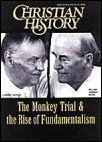
Issue 55: The Monkey Trial & the Rise of Fundamentalism
Social reform defined 19th century conservative Christian revivalism. When the 20th century rolled around, Christian liberals joined the cause and conservatives were faced with a decision: Do we join forces with these "swashbuckling radicals" or separate from them? Opting for separation, the fundamentalist movement was born. This issue of Christian History & Biography begins with the famous Monkey Trial and investigates the clash between fundamentalism and modernism, between God and reason.
- The first century of American Christianity
- Reflections from the press
- The people and organizations of fundamentalism
- J. Gresham Machen on liberalism
- Conservative women
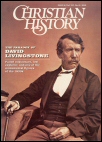
Issue 56: David Livingstone: Missionary-explorer in Africa
A 19th century explorer par excellence, David Livingstone entered Africa with intentions to trail blaze, evangelize, and civilize. He further hoped to eliminate the slave trade on both ocean coasts, a difficult task considering the British kept to the Atlantic. By the end of his life, he was hailed a British national hero for his winding jungle explorations and a failure as a missionary. Unbeknownst to him, his expeditions would glorify One greater than himself in the years to come.
Open this issue of Christian History & Biography to encounter a man who was a failed missionary, a lost explorer, and one of the monumental figures of the 1800s.
- Livingstone as scientist
- Missionary explorers
- Henry Stanley and Livingstone
- Livingstone’s family life
- Western missionaries after Livingstone
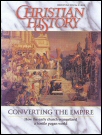
Issue 57: Converting the Empire: Early Church Evangelism
By the year 300 A.D.—without publicized campaigns or an explicit evangelistic strategy—Christianity had made its way quietly and effectively in an environment not wholly unlike that of the 21st century, post-Christian West. It was, in some respects, an empire within an Empire. So, how did it grow so large that one emperor felt threatened enough to persecute it mercilessly, yet another was intrigued enough to adopt its faith?
This issue of Christian History & Biography offers an assortment of articles about the various things that everyday Christians did to bring the name of Jesus Christ to the attention of pagans.
- Responding to strange accusations
- The context of the empire
- Early Christian martyrs
- Competing religions
- Little-known early evangelists
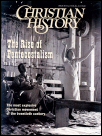
Issue 58: The Rise of Pentecostalism
Perhaps the most significant development in twentieth-century Christianity, Pentecostalism has grown from a few hundred members to 650 million worldwide—the largest Christian denomination after Catholicism. This issue of Christian History & Biography does not attempt to give the full, global picture; rather, you will read about the origins of Pentecostalism, encounter leading figures from its early years, and learn the many theological beliefs and charismatic experiences that have separated this sensational movement from the rest of Evangelicalism.
- The Azusa Street revival
- The Oneness movement
- Latinos and Pentecostalism
- Aimee Semple McPherson
- Debates over sanctification
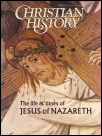
Issue 59: Life & Times of Jesus of Nazareth
The search for the "historical Jesus" rarely has been friendly to the biblical witness, choosing to side with critical reason over divine revelation. This argument over Jesus' identity has been raging for centuries—Who was Jesus of Nazareth, and is he the "Christ of faith?"
Christian History & Biography builds a foundation for answering this very question by investigating the various dimensions of daily life in first-century Palestine. This issue offers well-researched material on literary genres, social hierarchies, racial divisions, political corruption, false messiahs, travel and more from the time of Jesus.
- History in the four Gospels
- Ethnic and religious tension in the Middle East
- Travel in first-century Palestine
- Fishing in Galilee
- Life at the synagogue
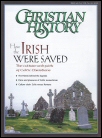
Issue 60: How the Irish Were Saved
Entering a land known for powerful druids, nomadic magicians, and widespread paganism, St. Patrick brought the Gospel of peace to a historically barbaric land. His mystical yet ascetic understanding of Christianity attracted the cult-following inhabitants of Ireland's rolling hills and led to a devout monastic tradition that still lives on today. This issue of Christian History & Biography lifts the mist and fog of myth and fable that surround ancient Celtic faith and allows this beautiful tradition to become visible once again.
- Patrick the saint
- The theology of Celtic Christianity
- Early Celtic leaders
- The history of “Be Thou My Vision”
- The Viking invasion
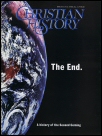
Issue 61: A History of the Second Coming
While many theological discussions are reserved for the upper rooms of ivory towers, eschatology finds its way into everyday conversations of everyday people. Differing views of the end times have been cause for dialogue, evangelism, celebration, anger, and even bloodshed because these are matters of thought for the masses. As believers, we fervently anticipate the coming of the Lord Jesus Christ—on this point we all agree. How, when, and why will He come back? Christian History & Biography lends perspective to the full breadth of this question (and its answer) with an issue devoted to the history of Christian eschatology.
- Historic millennialism
- Medieval apocalypse
- Luther and Calvin on the doctrine of the last things
- American Christianity and Jonathan Edwards
- Dispensationalism
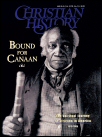
Issue 62: Bound for Canaan: Africans in America
The story of African-American Christians before the Civil War is the story of the Gospel's power to free. It is the story of a faith that finally overwhelmed whips, shackles, and southern law; faith that persevered in spite of illiteracy, superstition, and cowardice; faith that endured even northern courts and "Bible Christianity." It is the story of how the Gospel took root in the lives of African-Americans and gave them hope and courage in tragic conditions—and gave them freedom.
This issue of Christian History & Biography covers the struggle of both free and slave Christians from the perspectives of White and African-American scholars and historians.
- Black Christianity before the Civil War
- The Nat Turner rebellion
- Abolitionism
- Black Methodists
- The Baptist denomination
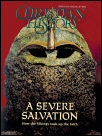
Issue 63: How the Vikings Took up the Faith
Though the Vikings have been infamous for their attacks on Christian churches and monasteries—inspiring throughout Europe the prayer, "From the fury of the Northmen, O Lord, protect us"—those very raids began a centuries-long process of exposure and eventual conversion to the Christian faith. Christian History & Biography investigates the Vikings' journey by focusing on different kings, missionaries, and evangelistic techniques that made the knowledge of the gospel available—and even mandatory.
- King Olaf Haraldsson
- Reading runestones and graveyards
- The conversion of Scandinavia
- Erik the Red
- The conversion of Iceland
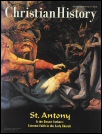
Issue 64: Anthony & the Desert Fathers: Extreme Faith
Rarely known for its monastic elements, the Nicene Age boasts the emergence of the prototypical Christian ascetic: St. Antony. Committed to Scripture and discipline, Antony established obedience and simplicity as primary Christian virtues. But was that enough? Could solitude stand on its own, or did it serve a greater purpose? Antony, and the "desert fathers" who would follow his brave example, lived the answer to these questions.
This issue of Christian History & Biography takes an in-depth look at the Egyptian desert beginnings of Christian monasticism and asceticism in the 4th century.
- Antony of the Desert
- The urban life of early monks
- The life of Jerome
- The theology of the desert fathers
- Skirmishes with demons
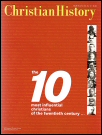
Issue 65: Ten Influential Christians of the 20th Century
Billy Graham, William Seymour, Mother Teresa, Karl Barth, C. S. Lewis, John XXIII, Alexandr Solzhenitsyn, John Paul II, John R. Mott and Martin Luther King, Jr. This list contains pastors, evangelists, social workers, Popes, revolutionaries, scholars, writers, theologians, professors and leaders. These ten individuals have offered much to the global Church, and we of the 21st century are grateful.
Christian History & Biography offers this issue in recognition of such devoted Christian leaders whose ministries have impacted millions in the West and around the world.
- Billy Graham
- William Seymour
- Mother Teresa
- Karl Barth
- C.S. Lewis
- John XXIII
- Alexandr Solzhenitsyn
- John Paul II
- John R. Mott
- Martin Luther King, Jr.
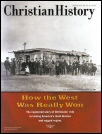
Issue 66: How the West was Really Won
Mark Galli, Christianity Today Senior Managing Editor, writes, "The topic—Christianity in the American West—is as big as the region, and as diverse. There is no overarching narrative... no single figure... Local heroes and local stories dominate the West."
This issue of Christian History & Biography recounts the neglected story of Christianity and the settling of the American West. Inside it are diary entries, biographical anecdotes, and intriguing articles that capture the courage and ruggedness of Christian faith in the West.
- Preachers in the West
- Christianity and the California gold rush
- The Whitman Massacre
- The life of Sheldon Jackson
- The early years of Mormonism
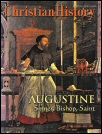
Issue 67: St. Augustine: Sinner, Bishop, Saint
He was a brilliant theologian whose mind raged over a vast array of issues with incomparable depth and dexterity. He was a regal bishop, an ecclesiastical authority, who refined the teachings of the church. And he was a fallen human being who struggled with common weaknesses: sex, vanity, self-recriminations, anger and depression.
Christian History & Biography offers this issue as an informed look at the everyday life of St. Augustine. History has built him into an untouchable thinker and a legendary mind, but he was first and foremost a man—a human who was seeking the living God.
- Augustine’s five most distinctive teachings
- The Confessions
- Contemporary critics
- The early years of Augustine
- Augustine and Pelagianism
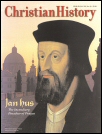
Issue 68: Jan Hus: Incendiary Preacher of Prague
With the papal schism commanding so much of the Catholic Church's attention, many vocal dissenters during the early 15th century were silenced by a fiery death. Jan Hus was one of these dissenters. An ardent reformer and a passionate preacher, Jan was outspoken in his disdain for the sale of indulgences, the Eucharistic disparity between clergy and laity, and the conduct of priests in general. Christian History & Biography offers this issue as a look at the life and death of Jan Hus: his supporters, his enemies, and his fireproof legacy that would last long after his body burned away.
- Jan Hus’s zeal for Reform
- The legacy of Hus among Czech Christians
- The shared ideas of Wyclif and Luther
- Jan Hus and the popes
- Preaching and Reform
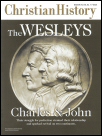
Issue 69: The Wesleys: Founders of Methodism
A friend from Oxford, John Gambold, said of the Wesleys, "could I describe one of them, I should describe both." Such is the story of John and Charles. They walked interweaving paths of ministry, calling, talents and passions which led them to found a denomination together. Their commitment to worship, piety and evangelism sparked revivals of religion on the British mainland and in the American colonies.
But how were John and Charles prepared for this massive ministry undertaking? Christian History & Biography offers some answers. In this issue, you will learn about their family lives, parents, romantic pursuits, and schooling. They were ordinary men, but they were giants as well.
- The Wesleys in America
- Marriage and family
- The disagreement over holiness
- The Wesleys and the expansion of print media
- The development of Methodism
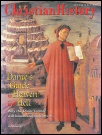
Issue 70: Dante's Guide to Heaven and Hell
Before Dante's 3-part Comedy, a book had never been written with such eschatological imagination or morbid illustration. Inferno explores the bowels of hell, those places only intended for Satan himself; Purgatorio follows the partially sanctified believer through seven levels of repentance for seven deadly sins; Paradiso reveals the true end of humans as unity, righteousness, and love before the throne of God Almighty.
Christian History & Biography invites you to open your mind to the creativity of Dante, the author whose beginnings, struggles, and triumphs you will learn about as you read this colorful and information-rich issue.
- Dante’s theology
- Divine imagination
- Purgatory
- The translation of Dante’s works
- Dante’s lesser-known works
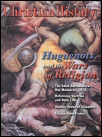
Issue 71: The French Huguenots and the Wars of Religion
On August 24, 1572, King Charles IX ordered the assassination of Gaspard de Coligny, the leader of the Protestant Huguenot movement. His decree sent the country into an uproar and would cost thousands more Protestants their lives. What would bring the king to give such an order? Did Charles come to this decision himself, or was he coerced? How connected were religious affiliation and political power during this time in France?
This issue of Christian History & Biography investigates the political maneuverings and religious resentments that led to the gruesome massacre of over 10,000 Protestants in 16th century France.
- The Saint Bartholomew’s Day Massacre
- Reforming doctrine and restructuring Christian life
- John Calvin’s Prefatory Address
- Pierre Viret, the forgotten Reformer
- Sébastien Fath on pluralism and evangelicalism in contemporary France
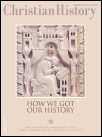
Issue 72: How We Got Our History
What lies behind the scenes of Christian history? Who were our most influential historians? When and where did they live? Who was their immediate audience? What were their political agendas, personal worldviews, and theological biases? These questions open the door to historiography, the investigation into how history has been written.
This unique issue of Christian History & Biography embarks on such an investigation, offering you an informative look at many of the great historians from the Roman, Medieval, Renaissance and Modern eras.
- Eusebius
- Bede and the history of the church in England
- Medieval churches
- Renaissance scholarship and the papacy
- Philip Schaff, father of American church history
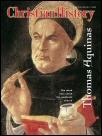
Issue 73: Thomas Aquinas: Greatest Medieval Theologian
The Medieval Church was in disrepair. Theological inquiry had not been undertaken for centuries. The best and brightest of Europe were off battling the Saracens or seeking wealth and repentance on Holy Land Crusades. Enter Thomas Aquinas—the sharpest mind of his time and the man who would lay the groundwork for a lasting theological legacy in the Western Church.
Open this issue of Christian History & Biography and meet St. Thomas, a man whose writing shaped the religion of the West and proved that the pen is indeed mightier than the sword.
- Encountering Aristotle
- The end of his writing career
- Aquinas and higher education
- Benedictines, Franciscans, and Dominicans
- Aquinas on government, law, and economics
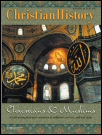
Issue 74: Christians & Muslims
A 1,300-year history riddled with wars, persecutions, and intolerance has left Christians and Muslims wary of conversation and skeptical of long-lasting peace. Tremors of 9/11 still reverberate in our minds as we try to ascertain if differences exist between love and tolerance, between justice and compassion. Who are these people we Christians are often so willing to lash out against? What is the history behind these two global religions? Do we make appropriate assumptions about Islam, or do we perpetuate misconceptions and false stereotypes?
This issue directly or indirectly addresses these questions as it chronicles the different interactions between Christians and Muslims throughout the centuries.
- The prophecy of Muhammad
- Secrets of Islam’s success and spread
- The Crusades
- The Battle of Tours
- Jihad

Issue 75: G.K. Chesterton: Prolific Writer & Apologist
Really get to know G.K. Chesterton, from his birth through his spiritual journey, to his essays, his unique theology, and even his popular Father Brown detective novels. You'll thoroughly explore Chesterton's life, his work, and his impact on our world today. Plus, you'll enjoy the photos, colorful caricatures, and timeline of his life.
- Chesterton’s spiritual journey
- Chesterton on the working class in Britain
- The intellectual contemporaries of Chesterton
- Chesterton’s spiritual journey
- Published works in addition to Orthodoxy
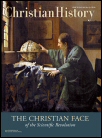
Issue 76: The Christian Face of the Scientific Revolution
Christianity and science have a complex relationship. From the days of Plato, a chasm has existed between faith and scientific inquiry, between the supernatural and natural. But was Plato accurate? Are the things of science and the things of God incompatible? For Copernicus, Galileo, Brahe and Newton, there was only one answer: No.
These men were a few among many in the early Modern era who labored to know God by investigating the inner workings of the universe. They were convinced that when they peered through their lenses, worked out their equations, or conducted their experiments, they were gaining a privileged insight into God's glory, in all of its macroscopic and microscopic detail.
This issue of Christian History & Biography reveals the spiritual foundations of their scientific explorations, and it provides an intriguing glimpse into the minds of God-fearing scientists.
- Galileo and the Roman Catholic Church
- Johannes Kepler
- The Reformers and Copernicus
- Blaise Pascal on math and physics, faith and revelation
- Isaac Newton on theology and science
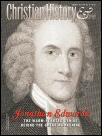
Issue 77: Jonathon Edwards: Puritan Pastor & Theologian
A distinguished American sociologist once called him "the last Protestant theologian before the 20th century to have in his control the entire imaginative resources of the Christian tradition." Jonathan Edwards was truly a man and a mind deserving of appreciation and imitation. His legacy as a devoted Puritan, a disciplined thinker, a brilliant theologian, and a passionate pursuer of God's glory has inspired thousands to heighten their affections towards the Lord and do everything for His pleasure and glory.
This recounts various stages of his life and ministry that have made profound impacts on Evangelicalism, American Christianity, and the global Body of Christ.
- Puritanism and the Enlightenment
- Jonathan Edwards and George Whitefield
- The Great Awakening
- William James on Jonathan Edwards
- The Northampton eviction
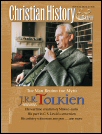
Issue 78: J.R.R. Tolkien & Lord of the Rings
Explore the world of J.R.R. Tolkien—a Christian author in a modern time and place shadowed by war. Learn how his work is a response to the condition of his times, and how the great novelist developed creatively through his interaction with his children—at times his only audience.
- Clyde S. Kilby on Tolkien
- Tolkien’s philology
- J.R.R. Tolkien and C.S. Lewis
- Sacramental imagination
- Good and evil
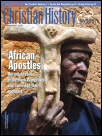
Issue 79: African Apostles: Black Evangelists in Africa
The challenges of 19th century African Christianity surrounded a central question of missions: When ought the missionary labor be handed over to the convert? North American missionaries brought the Gospel into the heart of Africa and began churches throughout the continent, but they were reluctant to yield power to indigenous leaders when they rose up. Then came men who whose passion and leadership could not be stifled.
Christian History & Biography presents the African Apostles: Resilient, mission-oriented men who overcame the pressure of racial stereotyping to lead an emerging indigenous church. Their prophetic callings and visions triggered an explosion of Gospel ministry across sub-Saharan Africa.
- Henry Venn’s mission in Africa
- Samuel Ajayi Crowther, the first Anglican bishop in Africa
- Converting from Islam
- Second generation African Christians
- West Africa's Aladura churches
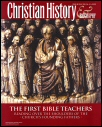
Issue 80: The First Bible Teachers
Unfortunately, some of the least-known figures of Christian history are the early church fathers (and mothers!). In this issue we meet such larger-than-life Bible teachers as Iranaeus, Origen, Augustine, Jerome, and Gregory of Nyssa. Peering over their shoulders, we see the rich, quirky, inspiring ways they drew life from the Book that was the center of their lives.
- Irenaeus on the Old Testament
- Habits of highly effective Bible readers
- Origen’s allegories
- The Cappadocian Fathers and the Trinity
- The Church Fathers on Scripture

Issue 81: John Newton: Author of “Amazing Grace”
After years of running, searching, and falling, amazing grace finally caught up with John Newton. Leaving the lucrative slave-trade behind, he devoted his life to ministering to the lowly, the overlooked, and the ordinary in his Olney parish, and he was both friend and mentor to a young William Wilberforce—the man who would end the greatest oppression in England.
This issue of Christian History & Biography recounts the life and legacy of John Newton, a man who willingly shared with others the grace that saved his wretched soul.
- John Newton’s life and times
- The friendship of William Cowper
- England’s evangelical underground
- The story behind the Jesus fish
- Newton’s letters
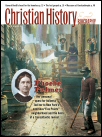
Issue 82: Phoebe Palmer: Mother of the Holiness Movement
Phoebe Palmer was the most influential woman in mid-19th-century America's fastest-growing Christian group—the Methodists. She mothered the American holiness movement, from which emerged new holiness and eventually Pentecostal denominations, missions, camp meetings, works of social reform, and female ministry. Find out how the death of a beloved child transformed this wife and mother into a social reformer and preacher who sparked a revival that brought nearly a million people into the church!
- Phoebe Palmer and religious revival
- Leaders of the holiness movement
- The holiness movement across denominational barriers
- The Da Vinci Code
- Women preachers in the holiness movement
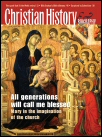
Issue 83: Mary in the Imagination of the Church
"Behold the handmaid of the Lord; be it unto me according to thy word." In that moment of humble obedience, an obscure Jewish girl became the instrument of divine grace triggering two millennia of reverence. Meet the flesh-and-blood woman God chose as the vessel of the Incarnation. Meet the scholars, priests, and poets who for centuries have fulfilled the prophecy of our Lord's mother that "all generations will call me blessed."
- Timothy George on a Protestant Mary
- The nativity story and tradition
- Mary’s life during Jesus’ childhood
- Mary at the cross
- Martin Luther on the nativity
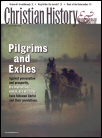
Issue 84: Pilgrims & Exiles: Amish, Mennonites, & Brethren
For centuries, the Mennonites, Amish, and Brethren have spurned prosperity and suffered persecution to follow Christ and their convictions. Learn about these conscientious objectors to modernity and the theological views that drive their unique way of life. Written by Amish, Brethren, and Mennonite authors, the articles in this issue give special insight into these often-misunderstood Christians.
- America’s Anabaptists
- William Penn
- The Brethren love feast
- Modernity and the Anabaptist movement
- David Brainerd
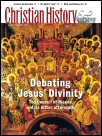
Issue 85: The Council of Nicaea: Debating Jesus’ Divinity
In 325 A.D., Emperor Constantine called together Christian bishops from across the empire to the city of Nicaea for a council that would have an immeasurable impact on the subsequent development of Christian theology. At the Council of Nicaea, bishops debated Jesus' divinity and produced the Nicene Creed, still recited by churches today. Learn about the issues that gave rise to this great council and the debates that followed it with this issue of Christian History & Biography!
- How Arianism almost won
- The road to Nicaea
- Key players at Nicaea
- Athanasius and orthodoxy
- The aftermath of Nicaea
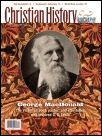
Issue 86: George MacDonald: Writer Who Inspired C.S. Lewis
Meet the Victorian poet, pastor, and storyteller who touched those he knew and inspired Christian writers like C. S. Lewis and G. K. Chesterton. Learn about his life, times, and work in this issue of Christian History & Biography!
- Samuel Taylor Coleridge and William Wordsworth on Christian experience
- George MacDonald's sermons
- George MacDonald’s use of fiction
- Victorian Christianity
- The faith of Fyodor Dostoyevsky, Alexander Solzhenitsyn, and John Bunyan
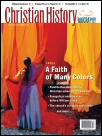
Issue 87: Christianity in India: A Faith of Many Colors
For the Indian people, the gospel is no ordinary or abstract message: it is an emancipatory declaration spurring societal transformation and the unity of high and low, rich and poor, touchable and untouchable. But how can the gospel transform, yet not destroy, culture? With what magnitude can it shake an oppressive societal system while maintaining appropriate cultural sensitivity? This colorful issue of Christian History & Biography thoroughly investigates these questions in the context of India's blossoming Christian faith.
- The social context of India
- First missionaries to India
- Indian philosophy
- "Untouchable" Christians
- Indigenous Christian movements

Issue 88: C. S. Lewis: Pointing People to Reality
The creator of Narnia and other imaginary worlds spent his life pointing people to Reality. You will be enlightened and encouraged as you learn more about the life and work of C.S. Lewis in this issue of Christian History & Biography!
- Douglas Gresham on his friend, C. S. Lewis
- C. S. Lewis and philosophy
- The literary time traveler
- C. S. Lewis on the proper Christian response to war
- Imagination and theological training
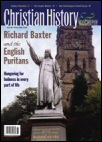
Issue 89: Richard Baxter & the English Puritans
With so many Puritans to choose from, why turn the spotlight on Richard Baxter?
Many reasons: Baxter lived through so much of the Puritan era—from 1616 to 1691. He wrote what by many standards is the best record of it, from a personal standpoint, in his autobiography. He was one of the top Puritan leaders of his day, the most successful Puritan pastor, and the most prolific Puritan writer.
From Baxter it is not a far leap into the wide spectrum of opinions, personalities, and experiences that make up English Puritanism as a whole, including one of its abiding characteristics: the belief that all real theology is practical theology. The Puritans were certainly not without their faults, but as Dr. J.I. Packer told us, in all of their diversity and adversity, their triumphs and setbacks, two very deep concerns emerge: how to be holy and how to be human.
- J. I. Packer on the Puritans
- Richard Baxter as model pastor
- The origin of the Puritan work ethic
- William Perkins: the C. S. Lewis of the Puritan movement
- John Geree’s 1646 tract on Puritanism
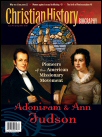
Issue 90: Adoniram & Ann Judson: American Mission Pioneers
Two attractive young people from small-town New England became the poster children of a cause that soon swept through the nation: Missions.
It's hard for us to imagine today that missionaries could have such an effect. But, as William Hutchison argued in his book Errand to the World, the fact was that these pioneers symbolized something vital to America's identity since the days of the Puritans—a new beginning, an adventure in the wilderness, a calling to be a light to the world.
- Adoniram Judson as a missionary
- Mission in 19th century Burma
- Early missions movements in America
- The music of missions
- The legacy of the Judsons
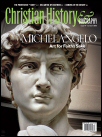
Issue 91: Michelangelo: Art for Faith’s Sake
Michelangelo, the great master, the paragon of Western art, was more than a solitary creative genius. He was a man wholly devoted to God, his calling, and his friends. In this issue you will learn about Michelangelo's deep faith demonstrated in his life and depicted in his art. In the larger context you will discover the role that art played during this era of rebirth and reform.
This issue of Christian History & Biography provides an opportunity for you to ponder how art could reflect and impact the worship practices and beliefs of Christians in our day.
- The frescoes in the Sistine Chapel
- Themes of Christ’s death in Michelangelo’s works
- Rebirth and reform in Renaissance Italy
- Bruce Herman on Fra Angelico
- Justification depicted in living color
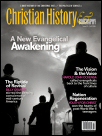
Issue 92: America’s 20th Century Evangelical Awakening
In the first half of the 20th century, in the midst of heated controversies between "fundamentalists" and "modernists," a vibrant movement emerged within evangelicalism. These "New Evangelicals" promoted active engagement in the culture, the application of Christian truth to society's problems, and the spread of biblical, historic Christianity throughout the world.
In this issue you will discover the Christian leaders and organizations that helped define the worldwide movement that now claims at least 70 million adults in the United States alone.
- Fundamentalism in early 20th century America
- Billy Graham’s crusades
- The parachurch phenomenon
- The new evangelical conscience
- Youth for Christ
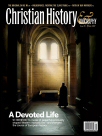
Issue 93: St. Benedict & Western Monasticisms
In the midst of our frenetic, fragmented modern culture, many Christians are finding something they long for in the simple ideals of the pioneering sixth-century monk Benedict of Nursia and the movement he sparked.
The monastic movement began as a desire among lay people for a more intense, disciplined way of living the Christian life. St. Benedict (480–547) wrote a guidebook for the monks in his monasteries that eventually became the standard for monastic life in the West. In the centuries following, monasteries thrived with Benedict's Rule as their foundation and influenced European culture in ways far beyond what those first humble monks dreamed.
In this issue, you will discover the story of these counter-cultural Benedictines and have the opportunity to consider how you might apply their ideals to your own life in the rough and tumble 21st century.
- The influence of Benedict
- Monasticism during Charlemagne’s reign
- Contemporary monasticism
- William Wilberforce and John Newton
- Richard Foster on Jean-Pierre de Caussade
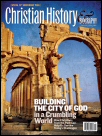
Issue 94: Building the City of God in a Crumbling World
"Faith, hope, and love abide, these three; but the greatest of these is love."
In this issue, Christian History & Biography offers you a selection of articles focused on building the City of God—living in love—in a crumbling world. As we confront the major issues of our time and seek to love all people in all circumstances, Augustine's writings, Chrysostom's preaching, Catherine's compassion, Kivengere's joy, Lutuli's devotion to justice, and many more examples from our history will guide us and inspire us.
- The fall of Rome
- John Chrysostom
- Abraham Kuyper on Christ
- Encounters with Islam
- Calvin, Luther, Zwingli, and Bucer on the role of government
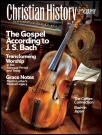
Issue 95: The Gospel According to J.S. Bach
Johann Sebastian Bach was certainly one of the greatest musical geniuses of all time. Today's Bach festivals, concerts, recordings and biographies testify to his immense worldwide popularity. Few realize, however, that Bach was firmly rooted in a musical tradition begun by Martin Luther two centuries earlier. In fact, Bach composed most of his music for Sunday morning church services.
In this issue you will learn about Bach's faith and its expression in his music, the early Lutheran music tradition from which he came, and how Bach's music continues to proclaim the Christian story. Finally, you are invited to reflect on how we could incorporate Bach's music into today's worship services.
- Bach’s Lutheran faith
- Sermons that sing
- Bach’s music in Japan
- Lutheran hymnody and J. S. Bach
- Christ’s suffering in Bach’s hymnody
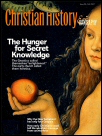
Issue 96: The Gnostic Hunger for Secret Knowledge
The Gnostics called themselves "enlightened." The early church called them heretics.
In recent years the early church has become a subject of public debate and an enormous amount of confusion. Gone are the days when the average Christian can get away with not knowing about the Gnostics, the early church's Rule of Faith, or how the biblical canon developed.
In this issue the editors lay out the basic facts that will help you evaluate and respond to this dizzying array of wild theories and popular books that promote additional gospels, early church conspiracies, and the rediscovery of the true Christian faith. You will learn who the Gnostics really were and why the early church called them heretics, how the early Christians could tell the apostolic message from the counterfeits, and why the New Testament has only four gospels.
- The emergence of Gnosticism
- The writings of Irenaeus against Gnosticism
- Christian belief before the creeds
- The rejection of the Gnostic gospels
- Modern instances of Gnosticism in the church
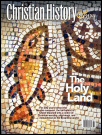
Issue 97: The Holy Land
Sometimes we forget that Israel is more than a playground of biblical tourist attractions or a battleground between Jews and Muslims. In the Byzantine era, 300 years before the Muslim conquest, the birthplace of Christ bloomed into a center of Christian worship, pilgrimage, and monasticism. Those Christians preserved the Biblical sites and carried on the legacy of the early church.
- The fall of Jerusalem in A. D. 70
- Monastic Christians in Palestine
- The Holy Land during the Byzantine Era
- The Battle over Christ’s tomb
- The history of Christianity during Persian and Muslim persecution
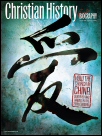
Issue 98: Christianity in China
Chinese churches have been bursting with new life for decades despite numerous limitations. It's impossible to understand the dynamic growth—and unique challenges—of Chinese Christianity today without looking back at the events of the last century. And when we do, we find a remarkable story of endurance and innovation, courage and creativity, intense suffering and transformative action. The Chinese church has been like bamboo, that ubiquitous Chinese symbol of strength, flexibility, and perseverance—growing even in the midst of harsh conditions, bending but not breaking in the wind.
- The emergence and growth of the house-church movement
- Christian intellectuals in China
- China in the 20th century
- Missionaries in China
- Worship under the political constraint of communism
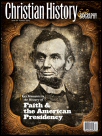
Issue 99: Faith & the American Presidency
Throughout the 2008 presidential campaigns, the religious beliefs and associations of presidential candidates have been at the forefront of public discussion. The importance that Americans place on the faith of their leaders is nothing new in American history, as this issue of Christian History & Biography shows.
In this issue, the editors selected six representative moments in American history—speeches, foreign policy decisions, and in one case an election—when the religious perspective of the president intersected with national and political issues in a significant and influential way. These events are windows. They reveal something about the personal faith of each of these presidents, and how each understood the relationship between that faith and their presidential duties. They also reveal the important, complex role religion has played in the American political scene since the earliest days of the republic.
- Civil Religion in America
- George Washington’s 1796 Farewell Address
- Abraham Lincoln’s Second Inaugural Address
- Harry Truman on the Nation of Israel
- Ronald Reagan’s controversial “Evil Empire” speech on the Soviet Union
Sample Pages from the Print Edition
Reviews
1 rating
William H. Grove
10/21/2017
Am I missing a price for this? I have the initial 51 copies, so how much is this download?Michael F Storz
10/3/2017